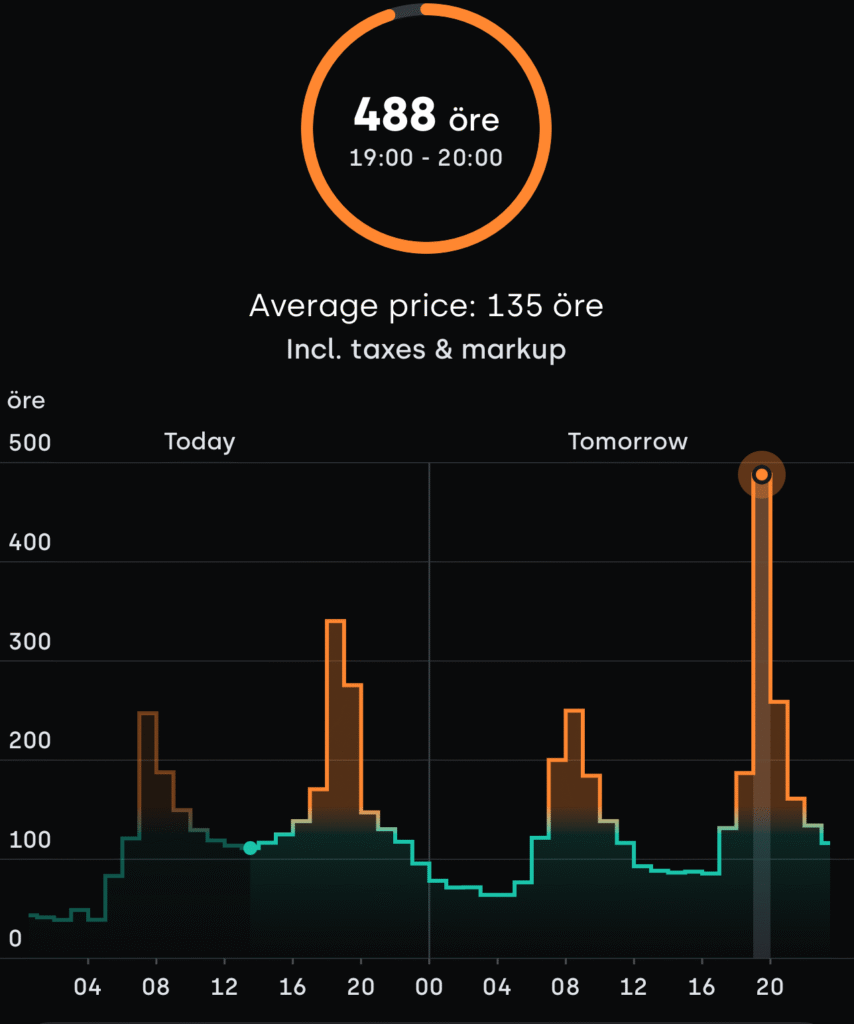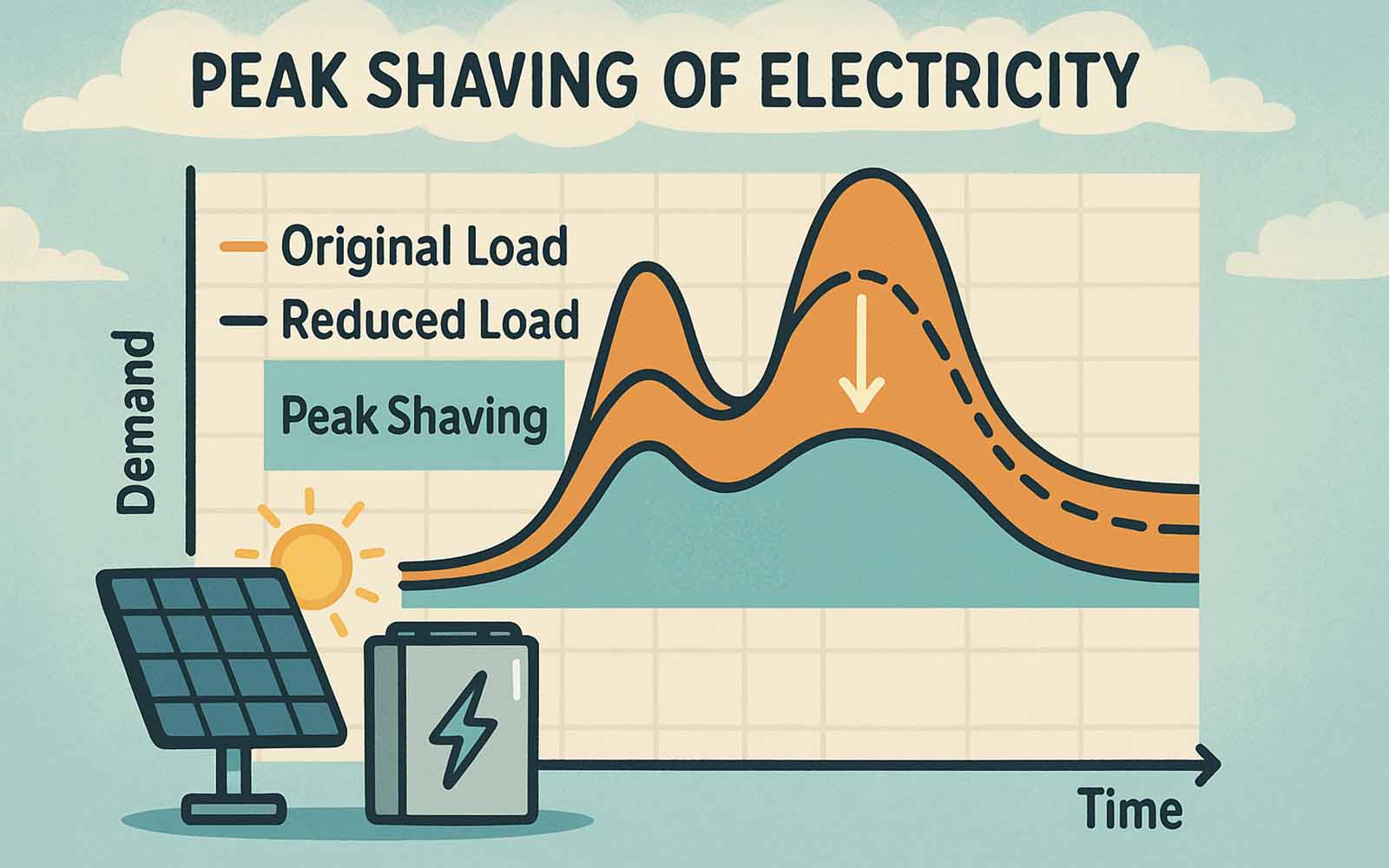Electricity consumption in a household is rarely even. Instead, it goes up and down — calm periods at night, followed by sharp peaks in the morning and evening when everyone is home, cooking, doing laundry, or charging the car. These peaks are not only a challenge for the power grid — they can also be costly for you as a customer. Peak shaving means flattening those peaks — reducing the moments when your electricity demand is at its highest — often with the help of a battery, solar panels, and smart control. In this article, we explain what peak shaving is, why it’s becoming increasingly important, and how we use it at home to reduce costs and ease the load on the grid.
What Are Power Peaks – and Why Are They Expensive?
Your electricity bill is not only about how much electricity you use, but also when you use it.
- Network fees: Grid operators such as E.ON and Vattenfall are starting to introduce pricing models where part of the cost depends on your highest power peaks, not just total energy consumption.
- Spot prices: Electricity is most expensive in the mornings and evenings, when national demand is at its highest.
- Grid load: Sharp peaks mean the grid has to handle more power in a short time, which increases costs for the entire energy system.
In short: your evening with cooking, washing, and EV charging all at once can cost more than the same energy use spread out during the day.
The Shift to Power-Based Pricing
Starting in 2026, E.ON will gradually introduce so-called effect tariffs, which means part of your network fee will be based on your highest power draw during the month rather than just total kWh consumption.
And this isn’t just E.ON. According to new Swedish regulations, all grid operators must implement power-based pricing by January 1, 2027.
The goal is to make customers more aware of when they use electricity — and encourage a more balanced consumption pattern throughout the day.
For households with solar panels and a battery, this is actually an opportunity. By using peak shaving, you can lower your highest power draw, which directly reduces the new “power-based” portion of your grid fee.
How Do Power Peaks Occur in Homes?
Most homes have similar patterns:
- Morning peaks: heating, showers, coffee makers, toasters — all running at once.
- Evening peaks: cooking, dishwashers, laundry, EV charging.
- Overlaps: multiple energy-hungry devices starting simultaneously.
Without any buffer, all of this energy is drawn directly from the grid — creating high and expensive peaks.

Tools to Shave the Peaks
So how can a household reduce its power peaks? Here are some of the most effective tools:
- Battery storage: use stored energy during peaks instead of drawing from the grid.
- Solar panels: cover part of daytime demand directly when the sun is shining.
- Smart control (e.g., Home Assistant): move heavy loads like dishwashers, washing machines, or EV charging to cheaper hours.
- Controlled EV charging: schedule or slow down charging to avoid overlapping with other high loads.
Our Setup at Home
With our 16 kWh battery (2×8), we can easily cover evening peaks during summer. In August, we had only two days when we needed to buy electricity from the grid in the evening — everything else came from solar and the battery.
In winter, the picture looks different: there’s often too little sunlight to fully charge the battery. But even then, the battery helps us cap the highest power peaks by discharging at the most critical times. It doesn’t cover the whole day, but it smooths the curve — and that makes a difference.
We also use Home Assistant to automate several things:
- The EV charges mainly at night or midday.
- The dishwasher runs when spot prices are low.
- Heating is slightly adjusted to avoid running at the same time as other large appliances.
The result: a smoother consumption curve and fewer expensive peaks.
Peak Shaving vs Load Shifting
It’s worth distinguishing between these two concepts:
- Peak shaving is about cutting the top off — lowering the maximum power draw.
- Load shifting is about moving consumption to other times of the day when electricity is cheaper or solar production is high.
In practice, most households do both — and a battery makes it much easier to balance between them.
Looking Ahead
With E.ON’s new effect tariff coming in 2026 and the national requirement for all DSOs to introduce it by 2027, the timing of your electricity use will soon be just as important as the amount you use.
For households, this means the battery is not only a way to store solar energy — it’s also a tool to actively manage grid costs and prepare for future pricing models.
Conclusion
Peak shaving may sound technical, but in practice, it’s about using electricity more evenly. With solar panels, a battery, and smart control, you can avoid the worst power peaks, lower your costs, and make your home more grid-friendly.
For us, peak shaving has already proven its worth:
- Fewer evening purchases from the grid
- Lower costs thanks to reduced peaks
- A smoother and more predictable energy profile
And with effect-based tariffs just around the corner, peak shaving will soon move from being smart to being essential.

No responses yet